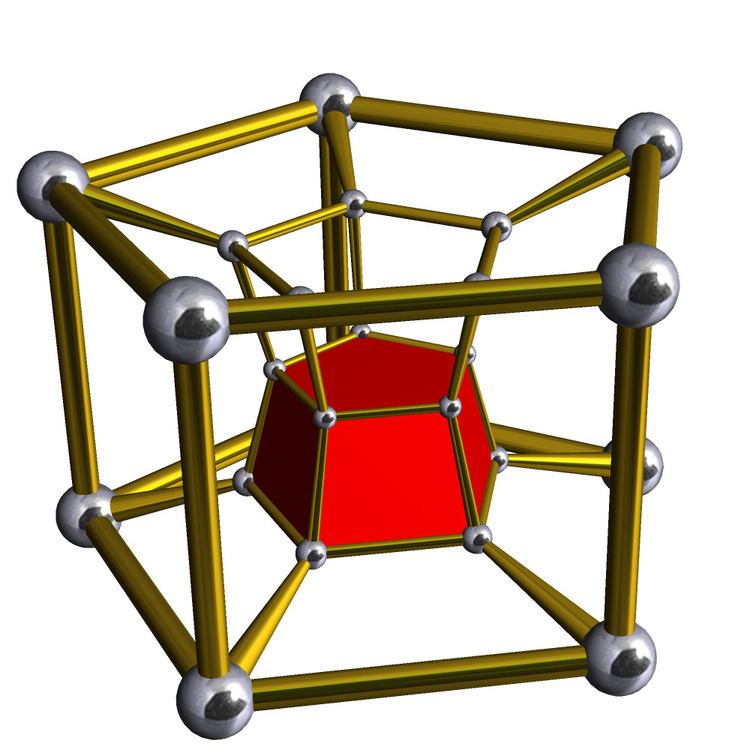 | ||
In geometry of 4 dimensions, a 5-5 duoprism is a polygonal duoprism, a 4-polytope resulting from the Cartesian product of two pentagons.
Contents
- Images
- Related complex polygons
- Related honeycombs and polytopes
- 5 5 duopyramid
- Related complex polygon
- References
It has 25 vertices, 50 edges, 35 faces (25 squares, and 10 pentagons), in 10 pentagonal prism cells. It has Coxeter diagram , and symmetry [[5,2,5]], order 200.
Images
Seen in a skew 2D orthogonal projection, 20 of the vertices are in two decagonal rings, while 5 project into the center. The 5-5 duoprism here has an identical 2D projective appearance to the 3D rhombic triacontahedron. In this projection, the square faces project into wide and narrow rhombi seen in penrose tiling.
Related complex polygons
The regular complex polytope 5{4}2, , in
Related honeycombs and polytopes
The birectified order-5 120-cell, , constructed by all rectified 600-cells, a 5-5 duoprism vertex figure.
5-5 duopyramid
The dual of a 5-5 duoprism is called a 5-5 duopyramid. It has 25 tetragonal disphenoid cells, 50 triangular faces, 35 edges, and 10 vertices.
It can be seen in orthogonal projection as a regular 10-gon circle of vertices, divided into two pentagons, seen with colored vertices and edges:
Related complex polygon
The regular complex polygon 2{4}5 has 10 vertices in
